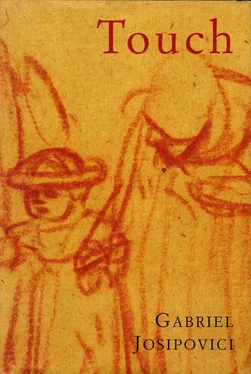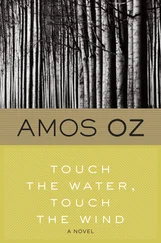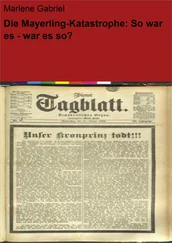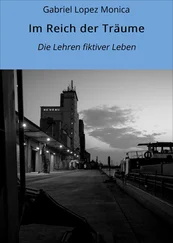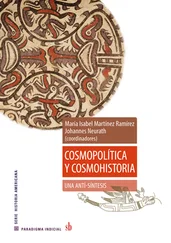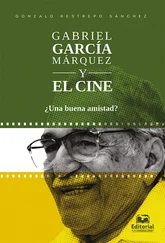Gabriel Josipovici - Touch
Здесь есть возможность читать онлайн «Gabriel Josipovici - Touch» весь текст электронной книги совершенно бесплатно (целиком полную версию без сокращений). В некоторых случаях можно слушать аудио, скачать через торрент в формате fb2 и присутствует краткое содержание. Год выпуска: 1996, ISBN: 1996, Издательство: Yale University Press, Жанр: Современная проза, на английском языке. Описание произведения, (предисловие) а так же отзывы посетителей доступны на портале библиотеки ЛибКат.
- Название:Touch
- Автор:
- Издательство:Yale University Press
- Жанр:
- Год:1996
- ISBN:0300066902
- Рейтинг книги:5 / 5. Голосов: 1
-
Избранное:Добавить в избранное
- Отзывы:
-
Ваша оценка:
- 100
- 1
- 2
- 3
- 4
- 5
Touch: краткое содержание, описание и аннотация
Предлагаем к чтению аннотацию, описание, краткое содержание или предисловие (зависит от того, что написал сам автор книги «Touch»). Если вы не нашли необходимую информацию о книге — напишите в комментариях, мы постараемся отыскать её.
Touch — читать онлайн бесплатно полную книгу (весь текст) целиком
Ниже представлен текст книги, разбитый по страницам. Система сохранения места последней прочитанной страницы, позволяет с удобством читать онлайн бесплатно книгу «Touch», без необходимости каждый раз заново искать на чём Вы остановились. Поставьте закладку, и сможете в любой момент перейти на страницу, на которой закончили чтение.
Интервал:
Закладка:
Since the time of Dr Johnson critics and readers have been divided as to whether Milton was right and Johnson wrong, or whether Milton was, in effect, hopelessly out of date and trying to do something which could simply no longer be done, as Johnson sensed.
For, as we have seen, already a century before Milton Rabelais had come to accept — and to turn to his own account — that literary genre, being no longer universally accepted (that is, underpinned by a shared view of the world and shared traditions), needed to be redefined and could no longer go on being used uncritically. At roughly the same time as Milton was writing Lycidas Molière was offering his audiences a play about a man who has no use for the polite conventions of society, and preachers everywhere were urging their congregations to reject the traditions of reading that had grown up round the Bible and instead to respond directly to the naked word of God. Wherever we turn it is the same story. In the introduction to his Principles of Human Knowledge (1710), George Berkeley writes that he intends to avoid error by taking ideas ‘bare naked’ into his mind without even the mediation of words; and Defoe at almost exactly the same time was setting the novel on its course by presenting his fictions not as the artefacts of a maker or stories told by a story-teller, but as the unadorned and direct account of his sailor and prostitute protagonists.
But, as with film, the greater lifelikeness of the novel is bought at a cost. Here too it is now possible to experience vicariously the most extraordinary adventures, to live within the skin of a Robinson Crusoe or a Moll Flanders for the duration of the novel. But here too this is possible only because the body of the reader has, so to speak, been left behind. (Not quite as much as it is in the cinema, for the words still have to be formed, even in silent reading, thus to some extent engaging the reader actively, but certainly far more than in the reading of poetry or of the prose of Rabelais, Nashe and Sterne.) But this fact had to be repressed or the benefits would not follow. By the nineteenth century, however, the more aware practitioners of the new form, such as Poe, Hawthorne and Dostoevesky, began to sense that a price would have to be paid for this act of repression. Their works are haunted by mirrors and by that creature of the mirror, the double, as though they would allay the guilt of repression by turning its consequences into their actual subject-matter. Poe's ‘William Wilson’, which contains a double whose very voice echoes that of the protagonist, and which ends with a murder-suicide in front of a mirror, merely makes manifest in a rather melodramatic way the tensions hidden in the new form, and suggests that if there is to be an honest ending it will have to be self-annihilation.
What is troubling about mirrors, I suggested, is that they demand to be looked at. We cannot live with a mirror as we can with sofas and tables, merely accepting it as a part of our daily environment. But has not painting, since the Renaissance, forced us to look at it head-on, as though it were a mirror, to stand back and examine what is within the frame rather than simply living with the image, as the worshipper had done for centuries with altarpieces and stained-glass windows?
To compensate for this the greatest artists have taken a variety of steps. Chardin, for example, in his still lifes, shows us the worn and weathered surfaces of pots and pans and jugs, making us aware simultaneously of the beauty of the quiet craftsmanship that has gone into their making, and of the comparable labour that has gone into the painting we see before us. But the main device painters have used to compensate for the insistent gaze to which they know their work will be subject is to let a window into their painting in order to draw our gaze out into the distance. The window is a space within the painting which is free of the tyranny of gaze, a framed space within the larger frame of the painting which acts as a focus for the release of tension generated by the larger frame and painted surface. It is fascinating to note that in two of the greatest paintings which herald the triumph of the accurate depiction of realistic space, van Eyck's Arnolfini double portrait in the National Gallery and Velázquez's Las Meninas at the Prado, the key elements are the mirror and the window or door. Foucault has written eloquently on the latter as a pivotal work in the transition from medieval to modern, but it is the former which is perhaps more interesting from our point of view.
1. Jan van Eyck, The Marriage of Giovanni (?) Arnolfini and Giovanna Cenami(?) , 1434. (National Gallery, London)
At the back of the room, behind the rather inward-looking yet hieratic figures of Jan Arnolfini and his pregnant wife, a convex mirror hangs on the wall. In the space of the painting it nestles just above the barely touching hands of the two protagonists, too low in realistic terms to reflect what the painter in fact makes it reflect, yet at the precise point at which the perspective lines of the composition draw the eye. Had the wall at this point been blank it would have left us frustrated and trapped; instead, as we look into the mirror, we are drawn back once more into the room, and a perpetual movement is set up, for the room and its inhabitants in turn draw us back to the mirror. As we look into the mirror we see the backs of the two protagonists and, on the threshold of the room, two other figures and a gleam of light through the open door. The mirror also manages to reflect the window which we see on the left of the picture, with an orange-tree growing in the garden outside and four oranges, one on the window-sill and three on a table just beneath the window.
But the mirror itself is also an object in its own right. Its inner frame is circular and picked out with dabs of blue and red; outside that, in ten little panels, are depicted ten scenes from Christ's Passion, from the Agony in the Garden to the Resurrection, with the Crucifixion at the very top. Above the mirror, in a most elaborate script, the painter has inscribed the words: ‘Johannes de Eyck fuit hic, 1434’. Art historians have often commented on the boldness of the gesture: a painter signing his own work — itself still unusual at that date — not in a corner but in the very centre of the picture. Some have suggested that it is the artist's witness to the marriage of the Arnolfinis, but while this may well be the case it still does not account sufficiently for the fantastic elaboration of the script. What has not so often been noted is the teasing ambiguity of the inscription: ‘Jan van Eyck was here, 1434’. But where is ‘here’? In the Arnolfini house? On the canvas? The phrase is like the mirror, in that it sends the reader back into the picture and then from the picture to itself. Fuit — was — asks us to ponder on the fact that Jan van Eyck was and is no more. That, along with Jan Arnolfini and his wife, he is long since dead. That the inscription, like the portraits, is only the trace of a life that once existed but does so no more.
At the same time the extraordinary richness of the initial ‘J’ activates in the viewer the very sensation of the calligrapher at work. Like the paradox of the Cretan liar it denies what it asserts and asserts what it denies. For, writing ‘Jan van Eyck was here, 1434’, and writing it so beautifully and so boldly right in the centre of the picture and just above the tiny scene of the Crucifixion, the painter ensures that he is in some sense still here, today, brought to life again by the viewer whenever the painting is looked at, just as for the believer Christ crucified rises again at every performance of the Mass.
In the same way the mirror beneath the inscription both affirms and negates the effect of mirrors, reproducing for ever an image that can only have been fleeting and asking us to note the act of artistic making without which it would not exist. Looking at the painting we experience wonder: wonder that such a work could have been made, wonder at the fact that Jan Arnolfini and his wife and Jan van Eyck existed then and left these traces, and wonder too that we exist and are seeing this, here, now.
Читать дальшеИнтервал:
Закладка:
Похожие книги на «Touch»
Представляем Вашему вниманию похожие книги на «Touch» списком для выбора. Мы отобрали схожую по названию и смыслу литературу в надежде предоставить читателям больше вариантов отыскать новые, интересные, ещё непрочитанные произведения.
Обсуждение, отзывы о книге «Touch» и просто собственные мнения читателей. Оставьте ваши комментарии, напишите, что Вы думаете о произведении, его смысле или главных героях. Укажите что конкретно понравилось, а что нет, и почему Вы так считаете.
